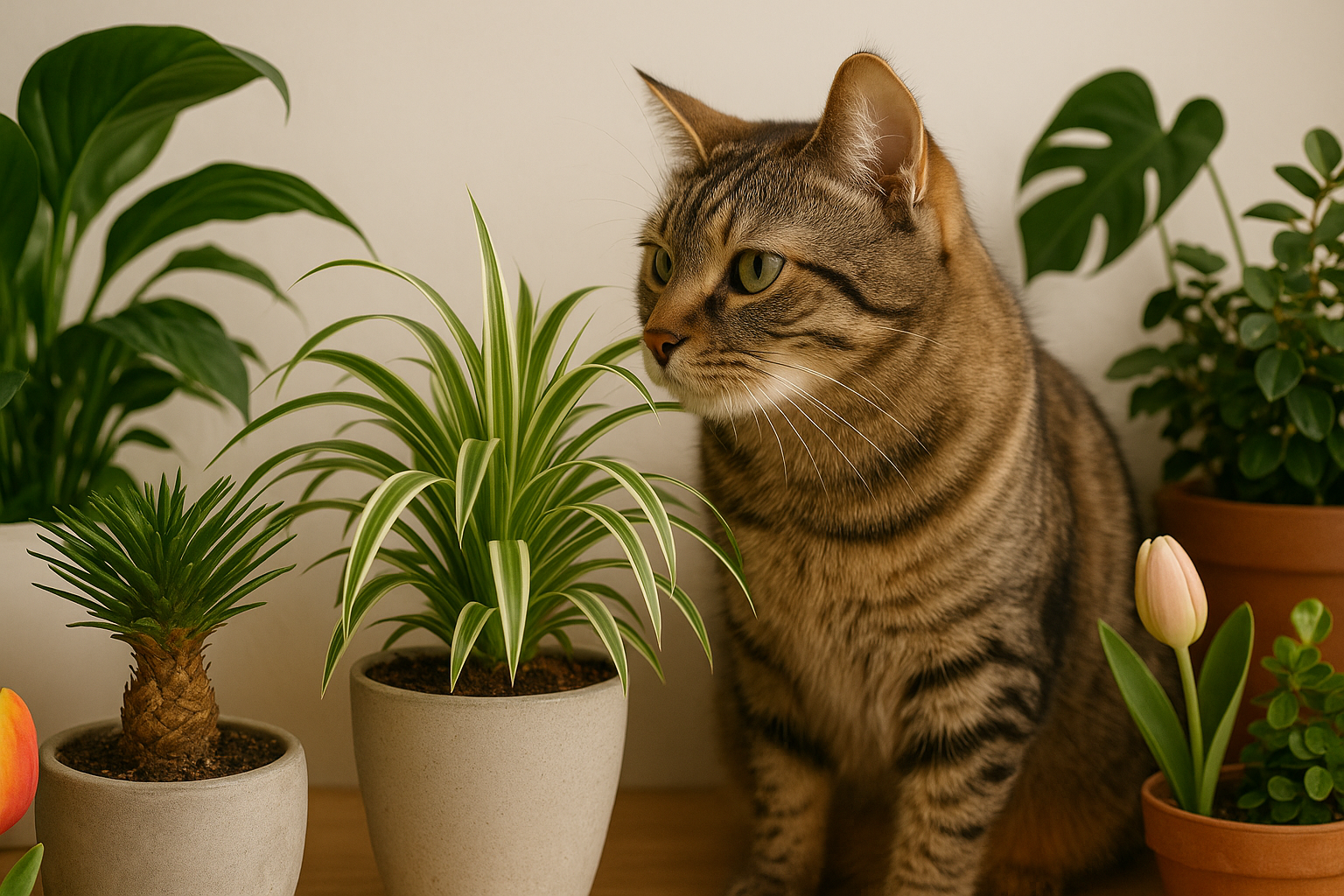Introduction
Bringing plants into your home changes the energy of the space; they provide calm, fresh air, and beauty. However, if you have dogs, cats, or other pets, you need to be cautious about the plants you choose. Many beautiful plants contain substances that protect them in nature. While these substances may repel insects, they can also pose dangers to household pets.
Creating a Harmonious Environment
This guide will help you create a beautiful and safe garden for your family and pets, without dangers or concerns.
Why Pets and Plants Require a Careful Balance
Animals explore their world using their mouths, noses, and even paws. An indoor jungle or blooming garden can be extremely appealing to their senses. Unfortunately, what is harmless for humans can be dangerous for curious pets.
The compounds found in plants vary widely; some can inflame gums, cause vomiting, disrupt organ function, or even affect memory and coordination after just a single taste. Reactions can be immediate or develop slowly, and many pet owners only realize the risk after an emergency trip to the veterinarian.
Common Culprits: Plants That Pose the Greatest Danger
To avoid a crisis, keep the following popular species far out of reach of pets:True Lilies (all varieties): Even a touch of pollen or water can severely damage a cat’s kidneys.
Sago Palm: Every part, especially the seeds, contains toxins that can cause irreversible liver damage to pets.
Azaleas and Rhododendrons: Ingesting just a few leaves can lead to muscle weakness, nausea, or changes in heart rhythm.
Oleander: It only takes a single leaf to cause cardiac arrest in pets.
Daffodil and Tulip Bulbs: Dogs are at greater risk if they dig up and chew the bulbs; watch for sudden drooling or stomach pain.
Common Houseplants: Varieties such as Philodendron, Monsters, English Ivy, ZZ Plant, and Aloe Vera can irritate mucous membranes and the digestive tract, often causing vomiting, swelling, or difficulty swallowing.
Seasonal Favorites: Mistletoe, holly, and poinsettias can cause digestive issues and other risks if ingested.
This list isn’t exhaustive; always check the safety of any unfamiliar plant before allowing pets access.
Reacting to Suspected Plant Poisoning
If you suspect that your pet has ingested a toxic plant, act quickly: restrict access to the plant and collect a sample (leaf or photo) to show your veterinarian. Call a professional immediately; avoid home remedies from the internet. Do not induce vomiting unless specifically instructed by a veterinarian, and closely monitor your pet for signs such as drooling, tremors, or unusual fatigue.
Quick and specialized attention can be vital for your pet’s recovery.
Safer Alternatives: Non-Toxic Plants to Beautify Your Home
Fortunately, you can adorn your home with beautiful plants that won’t endanger your pets. Consider these recommended varieties: Into or Plants: Spider Plant, Boston Fern, Parlor Palm, Ponytail Palm, African Violet, Caladiums, Prayer Plant, Christmas Cactus, and certain Orchids are decorative and safe. Outdoor Options: Rosemary, Lavender, Camellia, Zinnia, and Snapdragons bring reliable beauty and are safe for pets and pollinators alike.
Remember, even though these plants are non-toxic, they can still cause mild gastrointestinal discomfort if your pets overindulge.
Proactive Habits for a Pet-Proofed, Leafy Home
To maintain a safe environment for pets:Display plants in elevated locations or in separate rooms.
- Use heavy and stable pots to prevent spills or accidental tipping.
Avoid chemical fertilizers and pesticides; opt for pet-safe products and wash them thoroughly before bringing them indoors.
- Encourage pets to “leave it” by rewarding them for ignoring houseplants and providing appropriate chew toys.
Regularly clean floors of fallen petals, seeds, or leaves. Communicate with guests and caregivers about your pet-safe plants.
Why These Efforts Matter
A home filled with greenery and animal life offers much more than visual appeal; living plants purify the air, improve mood, and enrich the lives of both humans and animals. By prioritizing non-toxic varieties and careful plant arrangements, you can create a safe sanctuary, free from the concerns associated with toxic plants.
Your diligence cultivates peace of mind, health, and shared happiness among family members.
Checklist for a Worry-Free Green Home:
- Remove or isolate risky plants out of pets’ reach.
- Embrace vibrant and safe alternatives throughout your home.
Avoid lawn treatments and chemicals unless labeled safe for pets. Keep a complete list of plants in your home and consult experts about any unfamiliar species. Educate all family members, both two-legged and four-legged, about safe interactions with plants.
Reflect:
Your careful choices reflect how much you love your pets. With creativity, care, and attention, you can create a beautiful and safe home where pets can explore freely. Ultimately, a green and pet-safe home is a place where everyone in the family can thrive, plants, paws, and all. Remember, when it comes to safety, it’s always best to be cautious.
